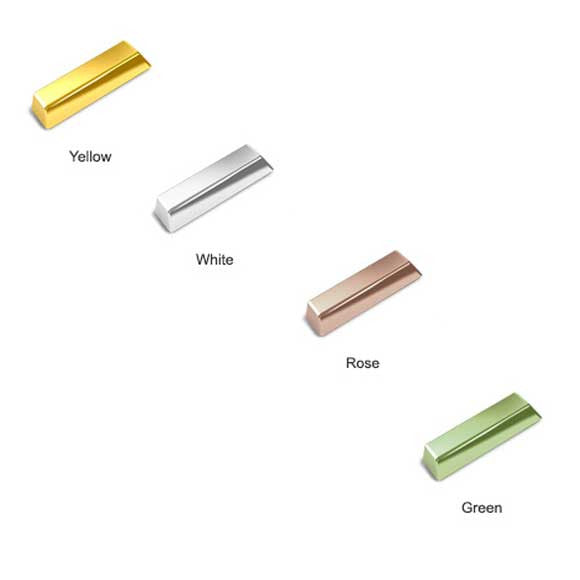by Nancy Troske March 17, 2017 1 Comment

When you think of gold, do you typically see it in yellow? I'm sure you're familiar with other gold colors such as white, rose, green and even peach. Did you ever wonder how those colors are obtained?
It's actually pretty simple. Pure .999 gold is bright yellow and is 24k. That means 24 parts out of 24 part are gold. Since 24k gold is quite soft, most jewelry gold is alloyed; other metals are added to pure gold and this gives it strength and will affect the color. Alloy metals can be silver, copper, zinc, and nickel - the amount of each alloy metal will change the color of the gold.

I've also read alloy sheets that talk about purple gold and blue/white gold but I personally haven't seen it.
A quick word on karat content. To determine the percentage of gold in any piece of jewelry, simply divide the karat content by 24 and multiply by 100. Therefore, 18kt is .750 pure (18/24 x 100) or 75 percent gold. So, 10kt and 14kt are 41.7 percent and 58.3 percent gold, respectively. It may surprise you to learn that 14k gold is only about 58% gold. When I make gold jewelry I work mostly with 22k gold, which I alloy myself in my studio. Sometimes I'll use 18k in a ring shank, but that's as low as I'll ever go in karat content. Working with 22k gold is a dream for a goldsmith. It's beautifully malleable and the bright, rich, yellow color is incomparable.
Please feel free to share and/or comment on this article.
May 13, 2017
If purchasing a four band puzzle ring made with 14kt green, rose, yellow and white gold bands, is there any particular order that looks best? Is the difference between thin yellow and green gold bands so subtle that it would be better to separate them with another color? Does a white band contrast with green gold more than it does with yellow? Any opinions would be welcome.
Comments will be approved before showing up.
by Nancy Troske December 01, 2024
by Nancy Troske August 12, 2023

Nancy Troske
Author